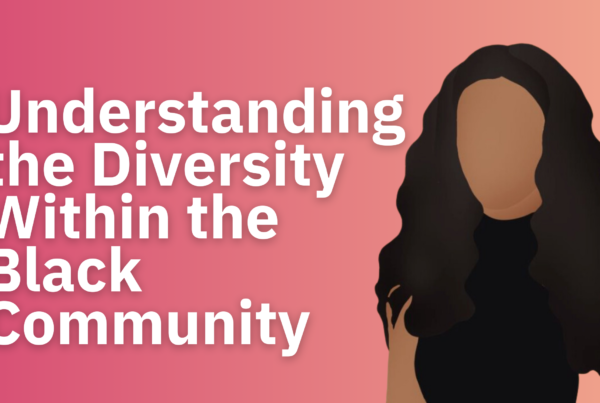We are living in an era of Personalization. More than ever it is crucial for your brand to build trust and credibility when targeting any audience, but, especially, Multicultural Audiences.
How to build trust and credibility when targeting Multicultural Audiences?
Today, 40% of the U.S. population is multicultural. That number will jump to 50% within 25 years. It’s about time to update your marketing strategy to ensure you can effectively engage these audiences.
If your customer does not feel impacted or represented by the message you are putting out there, they will quickly switch the channel or click somewhere else.
We have talked here about How to Identify your target audience and Why knowing your target audience is important. Now, it’s time to roll up your sleeves and make your Marketing Strategy reflect what you have learned about your consumers.
In this article, we will dive deeper into how to plan a Multicultural Marketing Strategy that will truly impact either your Multicultural or Minority Audience.
- Why knowing your target audience is important in your Multicultural Marketing Strategy?
- How to create a Multicultural Marketing Strategy that matters?
- Why is important to engage with Multicultural Audiences?
Why knowing your target audience is important in your Multicultural Marketing Strategy?
When you know your target audience and how can you better help and serve them, you can produce messages that will more effectively resonate with them and, also, focus on campaigns and advertisements with the right message for each of your consumers.
It’s important to have in mind that not all messages will be understood the same way by various groups of people.
The way each individual interprets a message is directly related to their background, culture, beliefs, likes, and dislikes, and so on.
That’s why personalization in all segments, but especially in multicultural marketing, allows your company to advance customer relationships and convert more.
Not knowing who your target audience is could cost you a lot of wasted time and money.
Read Next: Why knowing your Target Audience is important?
How to create a Multicultural Marketing Strategy that matters?
Building relationships with customers on a local level is one challenge. To make a positive brand impact, you need to create messaging specifically for targeted communities. How can you do it?
Multicultural Audiences: Representation Matters
When designing your Multicultural Marketing Strategy, have in mind that Representation Matters.
All your brand visual identity should reflect not only your brand identity but also your target audience. If your product/service is designed for Black & African-American Youth, this audience should be reflected on your visual campaigns.
That is why one of the first step is making sure your campaign is taking diversity in consideration.
This process goes beyond picking up some “Multicultural Pictures” and placing them in your advertisements. It needs a carefully image curation in order to choose the right image that will resonate to your Target Audience.
If your company also produces Commercials and Videos the same attention to detail will be required. As a Latin Woman if you’re trying to sell me your product/service I want to see my people in your campaigns, it makes me smile and also will most likely make me want to buy from you.
Diversity in the Workplace
Representation also goes beyond your marketing campaign. Do not forget to take a look at your workforce, specially your marketing team and your board room. What do you see around?
A Multicultural and Diversity approach starts inside your own four walls. How will your brand be able to reach minorities if all the message is being produced by a White-Caucasian team?
Read next: Why is cultural diversity important in the workplace?
Use the right Language when targeting Multicultural Audiences
We’re living the Majority/Minority Shift, where soon our country will have more people from multicultural and minorities backgrounds than White Americans.
Besides English being the official language in the USA, according to Pew Research:
Among immigrants ages 5 and older, Spanish is the most commonly spoken language. Some 42% of immigrants in the U.S. speak Spanish at home. The top five languages spoken at home among immigrants outside of Spanish are English only (17%), followed by Chinese (6%), Hindi (5%), Filipino/Tagalog (4%) and French (3%).
So, it’s important to take in consideration which language is preferred by your Target Audience.
It is not about translating your message to their language, but making the message to sound fluent and be understood. Automatic Translation Tools like Google Translator might be great when you want to understand a sentence in a foreign language, but might trap you when trying to communicated effectively to your target audience.
Be sure to incorporate cultural nuances when communicating to your Multicultural Audience.
Also, be careful with Slangs, Jargons and Jokes, they might sound offensive when not translated properly!
Why is important to engage with Multicultural Audiences?
Let’s have in mind that the United States has more immigrants than any other country in the world. According to Pew Research, more than 40 million people living in the U.S. were born in another country.
Other important fact is that 2020 hit an important mark on the majority-minority shift scenario: it was the year when the majority of all Americans under seventeen years old were from a minority background.
It’s undeniable that with the estimated continued population growth among multicultural audiences, it is more important than ever that marketers be intentional in cultivating authentic relationships with these audiences to help grow their businesses.
I dare to say that companies who keep crafting their marketing strategies to WASPs (White Anglo Saxon Protestants) and ignoring the power of Multicultural Audiences, will no longer been seen doing business.
It is not about only checking the boxes. It is about truly connecting to your audience.
Whichever approach your company chooses to do, your Multicultural Marketing initiatives should be consistent and continuous.
Your Marketing Strategy needs to be authentic and, foremost, based on real data about your target audience. When you understand your consumer, you will be able to create connections and relationships that will last.
The most important step is understanding your diverse audience and continuously evaluating to make sure your campaign is establishing a message that is genuine and powerful.
As marketers, we have a duty to use our knowledge to help our brands to communicate to all of their customers.
Do you need help designing your Marketing Strategy?

